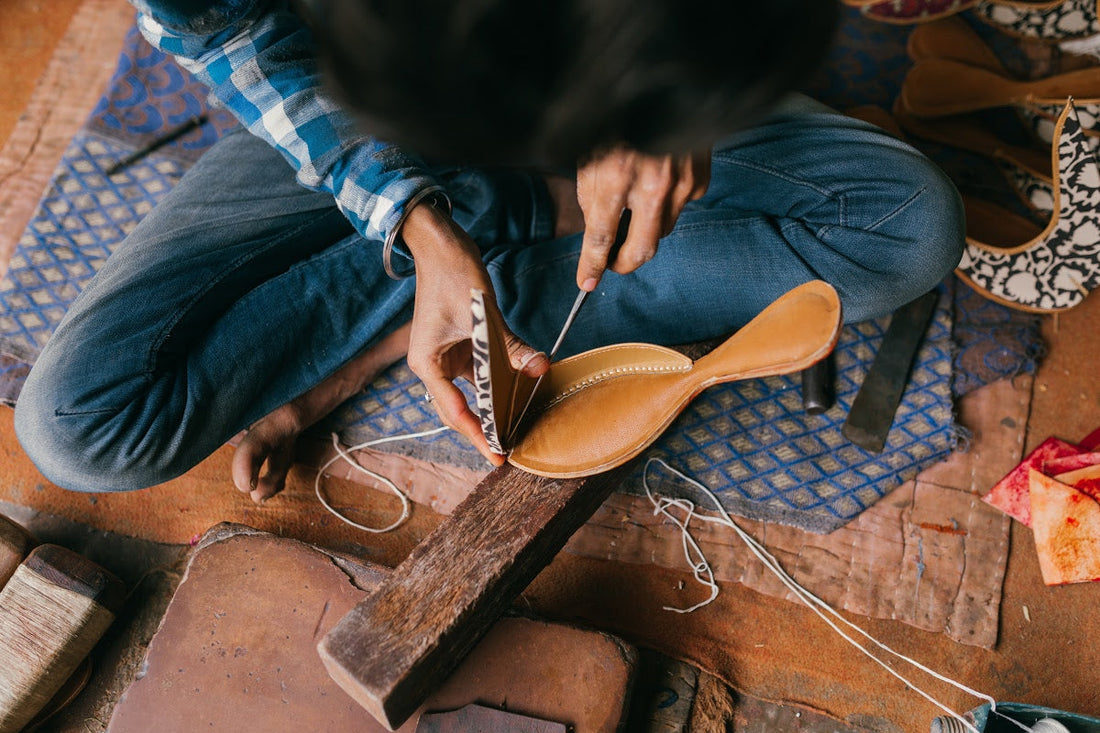
The History Behind Traditional Jutti
The Intricate Legacy of Traditional Jutti: A Journey Through Time
Historical Origins of Jutti
The Jutti, a traditional Indian footwear, weaves a tale that speaks of rich history and cultural heritage. Originating from the northern regions of India, particularly Punjab and Rajasthan, these shoes have adorned the feet of countless generations. Imagine walking through the streets of Delhi in the 13th century; the cobblestones echoing the soft footsteps of artisans and nobility alike, all decked out in beautiful, handcrafted juttis.
These shoes were more than just functional; they were cultural symbols. Originally crafted from leather, their designs reflected the craftsmanship of local artisans. The earliest forms were simple and practical, but as they made their journey through time, intricate patterns and styles began to emerge. The Mughal era saw a flourishing of jutti craftsmanship, where emperors and their courts would flaunt ornately designed juttis that showcased not just pride in craftsmanship but also the opulence of their reigns.
Craftsmanship and Artistry
What makes juttis stand out is the artistry that goes into creating each pair. Each jutti is a labor of love, often taking days, if not weeks, to complete. Skilled artisans meticulously handcraft these shoes using a variety of techniques passed down through generations.
Materials Used
Traditionally, juttis are made from leather, though modern variations can include cotton and silk. The intricate embroidery, often with colorful threads and sequins, not only highlights India’s and Pakistan rich textile heritage but also tells stories of the regions they come from.
Techniques
The craftsmanship involved in making juttis is nothing short of mesmerizing. The process begins with the selection of high-quality leather. The artisan then cuts the leather into precise shapes, and starts the tedious work of hand-stitching or embroidery. Each stitch is not just a functional detail but a stitch in history, carrying the weight of cultural memories.
This artistry extends beyond the shoes. The artisans themselves, often from families that have been doing this work for generations, share a bond with their craft that transcends mere occupation—it's a way of life
Cultural Impact and Preservation
As we delve deeper into the culture surrounding juttis, we uncover their significance beyond just footwear. Juttis have found their way onto the feet of brides, embodying grace and beauty on their special day. In many Indian and Pakistani weddings traditions, wearing beautifully embellished juttis symbolizes comfort and style—a delicate balance that speaks to the heart of cultural celebrations.
However, like many traditional crafts, jutti-making faces challenges in the modern world. Urbanization and fast fashion threaten the artisans’ livelihood, as mass-produced, machine-made alternatives flood the market. Fortunately, movements aimed at preserving traditional crafts have emerged, with many organizations like Ujaala working to promote the artisans and their work.
Through workshops and exhibitions, stories of these craftsmen are shared, breathing new life into a fading legacy. These initiatives remind us that every pair of juttis represents a connection to the past—a cherished link that deserves to be preserved.
Global Influence and Modern Trends
In today's globalized world, juttis have transcended borders, finding their way onto the runways and into wardrobes worldwide. Celebrities and fashion icons alike have embraced these traditional shoes, showcasing them in a variety of settings that elevate them from mere footwear to fashion statements.
Designers are reimagining juttis, combining traditional craftsmanship with contemporary styles.
You can find juttis adorned with modern prints, vibrant colors, and even quirky designs that cater to a younger audience.
This fusion of old and new serves as a bridge, ensuring that the craft continues to evolve while staying rooted in its heritage. The rise of e-commerce platforms has also made it easier for artisans to reach global markets, allowing their stories and craftsmanship to be celebrated beyond their geographical confines
Conclusion
The journey of the traditional jutti is a testament to the passage of time, the beauty of craftsmanship, and the resilience of culture. As we lace up these exquisite shoes, let's not only cherish their beauty but also honor the hands that create them. In every stitch lies a story, and every story deserves to be remembered and celebrated.
So, the next time you see a pair of juttis, take a moment to appreciate the thoughts and emotions encapsulated within—the legacy that walks with us, step by step.
